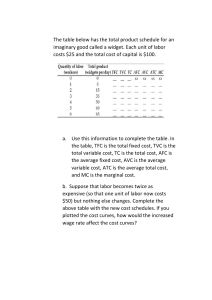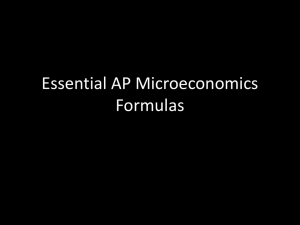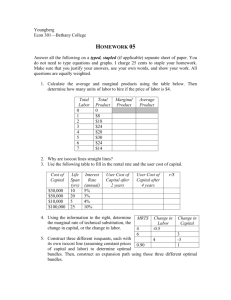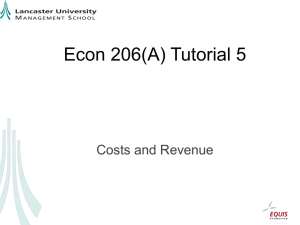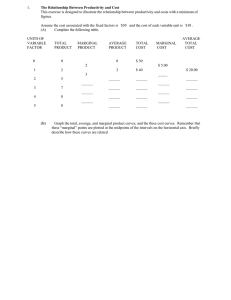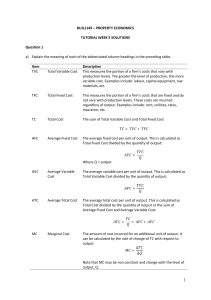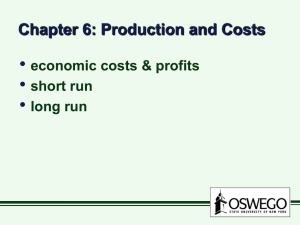Total cost - David Youngberg
advertisement
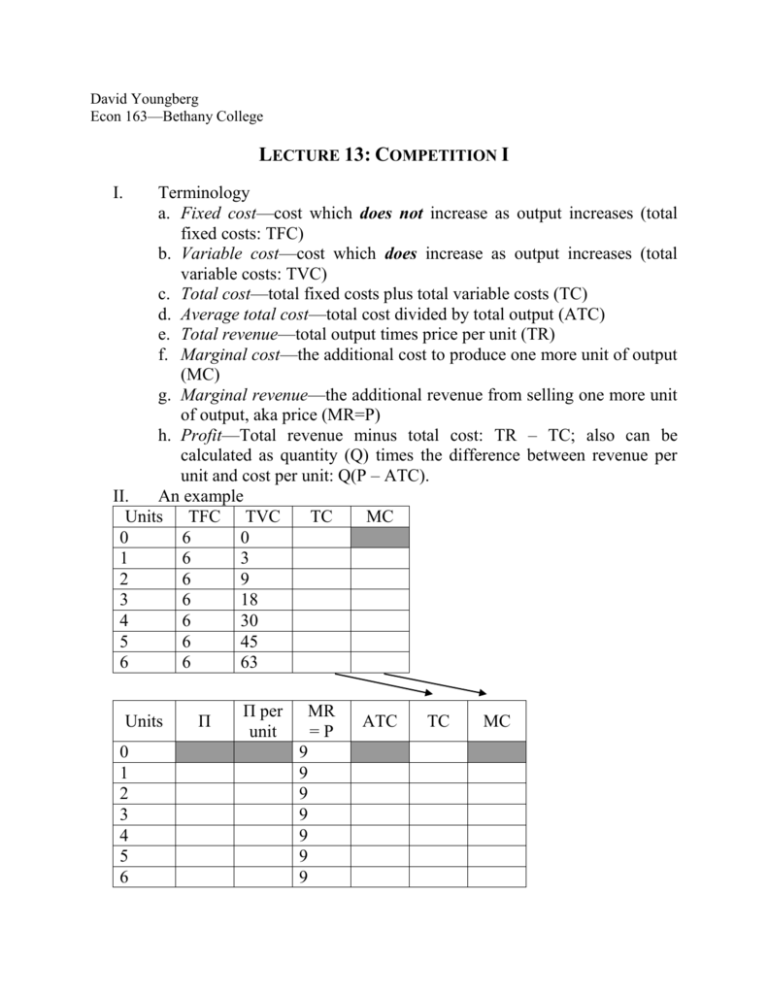
David Youngberg Econ 163—Bethany College LECTURE 13: COMPETITION I I. Terminology a. Fixed cost—cost which does not increase as output increases (total fixed costs: TFC) b. Variable cost—cost which does increase as output increases (total variable costs: TVC) c. Total cost—total fixed costs plus total variable costs (TC) d. Average total cost—total cost divided by total output (ATC) e. Total revenue—total output times price per unit (TR) f. Marginal cost—the additional cost to produce one more unit of output (MC) g. Marginal revenue—the additional revenue from selling one more unit of output, aka price (MR=P) h. Profit—Total revenue minus total cost: TR – TC; also can be calculated as quantity (Q) times the difference between revenue per unit and cost per unit: Q(P – ATC). II. An example Units TFC TVC TC MC 0 6 0 1 6 3 2 6 9 3 6 18 4 6 30 5 6 45 6 6 63 Units 0 1 2 3 4 5 6 Π Π per unit MR =P 9 9 9 9 9 9 9 ATC TC MC III. a. Assume this is a person selling old clothes at a yard sale. Assume the fixed costs is the advertising and basic set up requirements of the sale, the variable costs reflect the increasing difficulty of finding clothes the person is willing to sell, and the output is in boxes of clothes (sold at $9 each). We use Π to indicate profit. b. Recall that all individuals are rational and therefore act until the marginal benefit equals the marginal cost: MB=MR=P=MC i. How many boxes of clothes should you sell? ii. Note the profit is the same for two different quantities. This is an artifact of the analysis (where MR=MC). If the additional costs equal the additional revenue, then there should be no different in profit. Next class: Exam 2
